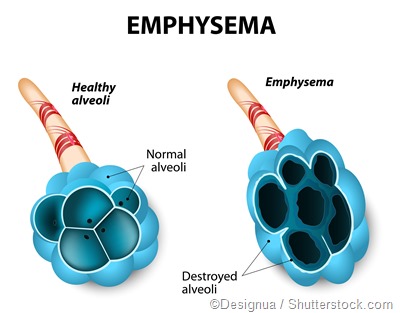Air pollution is air that contains a high concentration of pollutants that has the potential to cause harm to humans, animal, plants, or buildings. It is an important risk factor for the health of populations throughout the world. In fact, it has been estimated that outdoor air pollution caused 3.7 premature deaths on a global basis in 2012 alone.
Types of air pollutants
The damaging effect of air pollution on the lungs depends on the type and concentration of the air pollutant. The most common types of air pollutants are:
- Particulate matter (PM): small particles that can irritate and cause damage to the airways.
- Nitrogen dioxide: a gas that can irritate the airways and cause a flare up of asthma or COPD.
- Ozone: a gas that can reduce lung capacity and irritate the airways.
- Sulfur dioxide: a gas that can irritate the lining of the airways, particularly of individuals with asthma.
For particulate matter, the smaller the size of the particles, the deeper it can travel into the airways and the greater the potential to cause damage to the lungs. PM2.5 refers to particles with a diameter less than 2.5µm, which are associated with causing more significant damage to the lungs.
The air pollutants and their concentration vary considerably according to factors such as the region, weather, and season.
Acute effects
People who are exposed to high concentrations of air pollutants may have acute symptoms that present shortly after the exposure. Symptoms may include:
- Irritated airways
- Dyspnea (shortness of breath)
- Wheezing
Additionally, air pollution can also contribute to causing an asthma attack in susceptible individuals.
Chronic effects
Research has shown that chronic exposure to air pollution is linked to a higher incidence of lung diseases, such as chronic obstructive pulmonary disease (COPD) and cancer.

In 2013, the World Health Organization (WHO) declared that air pollution was carcinogenic to humans, based on the wide epidemiological research based on the topic.

Who is at risk?
Some individuals are more likely to be adversely affected by air pollution than others. For example, people with existing lung conditions (e.g., asthma or COPD) are more likely to develop complications and negative effects associated with the pollution. Children and elderly people are also more likely to experience negative effects as a result of inhaling air pollutants.
How to reduce damage
For individuals who live in areas that are affected by high levels of air pollution, there are certain things that can help reduce the damage on a day-to-day basis. These include:
- Reducing strenuous exercise in outdoor, polluted environments (use a gym or well-ventilated room instead)
- Avoid areas having high pollution, such as main roads
- Reduce time spent outside in rush hour when pollution levels are at their highest
- Ensure that inhaler medication, if prescribed, is easily accessible
- Use a preventer inhaler medication regularly (for asthmatics)
- Keep windows closed and set the air conditioner to recycle air when in a car
These techniques can be useful for those who are worried about their exposure to air pollution and related health effects. In addition to these, governmental bodies are currently taking measures to address the issue of air pollution, which is important to ensure the best outcomes for the health of current and future generations.
References
- https://www.blf.org.uk/your-stories/air-pollution-and-your-lungs
- https://www.ncbi.nlm.nih.gov/pmc/articles/PMC4549691/
- https://www.niehs.nih.gov/health/topics/agents/air-pollution/
- http://www.psr.org/assets/pdfs/air-pollution-effects-respiratory.pdf
- http://www.env-health.org/IMG/pdf/8._patients_with_lung_disease_-_info_leaflet_-_en.pdf

0Comments